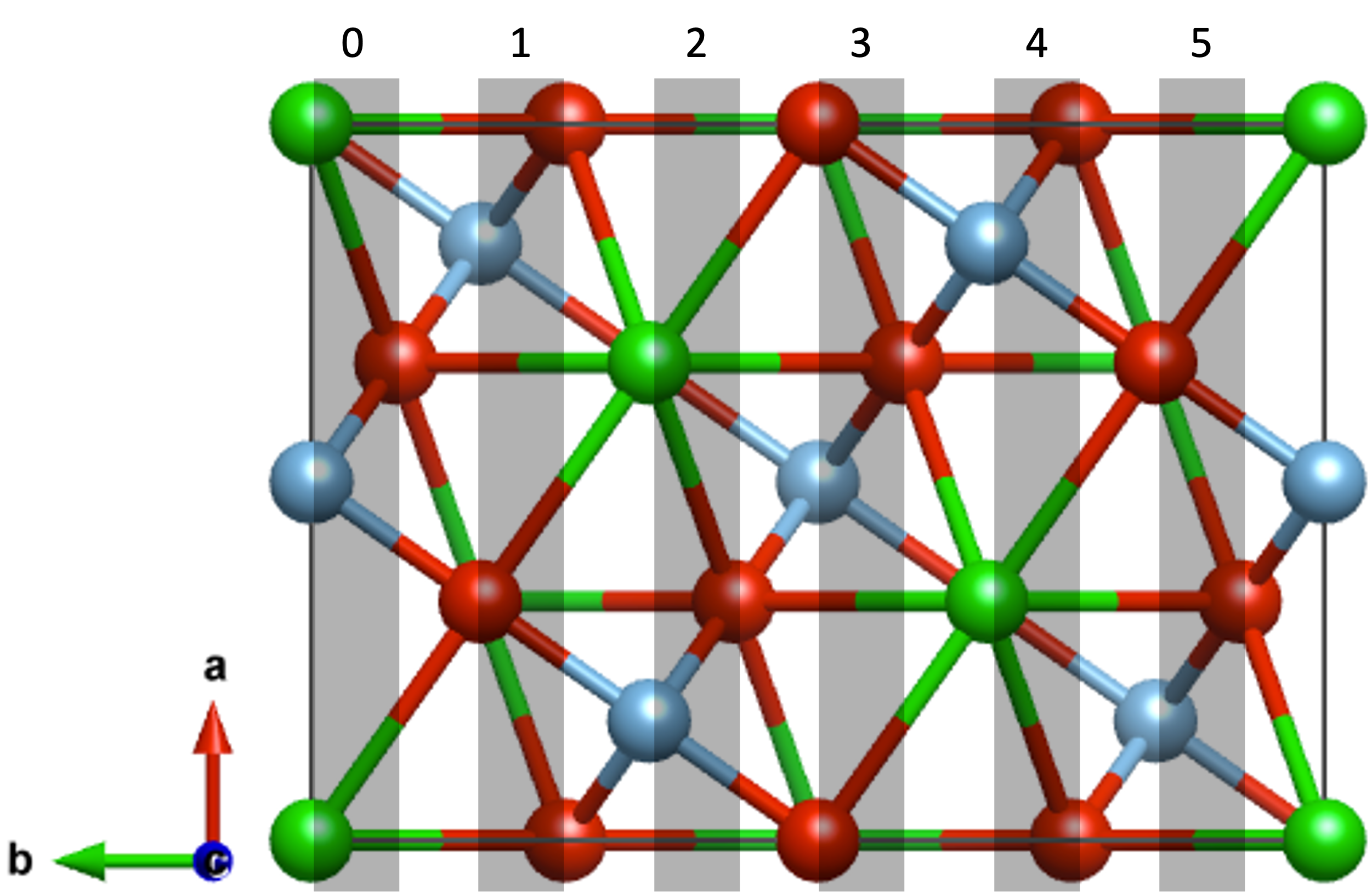SrTiO3
Let’s take SrTiO3 Σ3[110]/(1-12) tilt grain boundary as an example. The initial structure is a cubic structure:
from aimsgb import GrainBoundary, Grain
s_input = Grain.from_file("POSCAR_SrTiO3")
gb = GrainBoundary([1, 1, 0], 3, [1, -1, 2], s_input)
structure = Grain.stack_grains(gb.grain_a, gb.grain_b, direction=gb.direction)

s_input can also be created using from_mp_id method by giving an mp_id from Materials Project.
The mp_id of a cubic SrTiO3 is mp-5229:
s_input = Grain.from_mp_id("mp-5229")
In VASP calculations of interface models, we often want to fix some layers in the bulk. aimsgb provides a method to fix some layers in each grain.
First, let’s check the number of layers in each grain:
layers = gb.grain_a.sort_sites_in_layers(direction=gb.direction)
print(len(layers))
We can see that there are 12 layers in each grain. Please note that the default tolerance factor to determnine if sites are in the same layer is 0.25 Angstrom.
You can change the tolerance factor by giving a tol argument:
layers = gb.grain_a.sort_sites_in_layers(direction=gb.direction, tol=1)
print(len(layers))
We can see that there are 6 layers in each grain.

Next, let’s fix layer 2 and 3 in each grain:
gb.grain_a.fix_sites_in_layers([2, 3], direction=gb.direction, tol=1)
gb.grain_b.fix_sites_in_layers([2, 3], direction=gb.direction, tol=1)
structure = Grain.stack_grains(gb.grain_a, gb.grain_b, direction=gb.direction)
structure.to(filename="POSCAR")
We can see that Selective dynamics has been added in the POSCAR file.